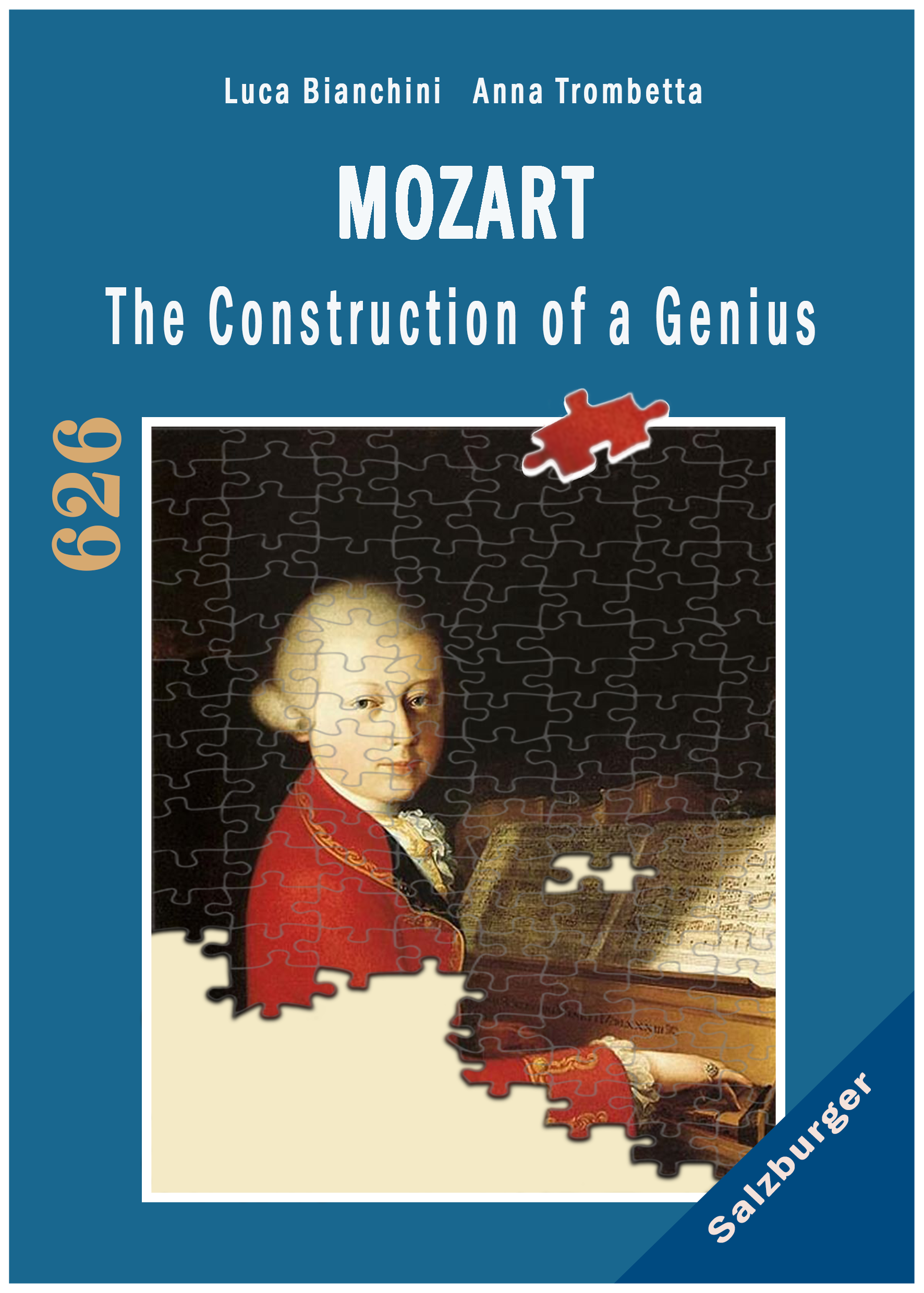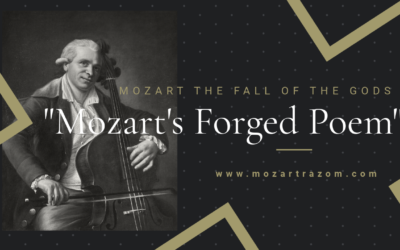Wolfgang Amadé Mozart
Unmasking the Myths: The Deception Surrounding Mozart's Legacy
Anton Eberl’s confrontation with Constanze in 1798 exposed a web of deceit surrounding Mozart’s legacy, revealing that several of his compositions were falsely attributed to the late composer. This chapter uncovers the ethical dilemmas and controversies that have marred the posthumous reputation of one of history’s most celebrated musicians.”
Mozart The Construction of a Genius: The Untold Story
Mozart: The Construction of a Genius” uncovers how the myth of Mozart was crafted after his death in 1791, initially to support his widow, then exploited by publishers, and later used to elevate Mozart as a cultural icon. Bianchini and Trombetta reveal that the personal catalogue attributed to Mozart is a late 18th-century fabrication, challenging long-held beliefs about his legacy.
“It is a compliment for me that even experts deemed these works to be Mozart’s creations, but I cannot allow the musical audience to continue being deceived.” – Anton Eberl
Mozart The Construction of a Genius
The Hidden Truth Behind Mozart’s Compositions
In the summer of 1798, a remarkable and unsettling series of events began to unfold. Multiple composers, including Anton Eberl, alleged that Mozart’s widow, Constanze, had misattributed their compositions to her late husband, Wolfgang Amadeus Mozart. This chapter delves into these claims, providing substantial evidence that challenges the authenticity of some works long credited to Mozart. Eberl, a distinguished composer in his own right, publicly voiced his scepticism, revealing that several of his compositions were being sold under Mozart’s name. His revelations sparked significant criticism and brought to light a series of deceptions that continue to taint Mozart’s legacy.
Anton Eberl’s Struggle for Recognition
Anton Eberl’s confrontation with Constanze was a courageous move in an era when challenging the legacy of a musical giant like Mozart was nearly unthinkable. In a public statement in 1798, Eberl disclosed that several music stores were selling his compositions as Mozart’s. Despite the fact that even experts had mistaken his works for Mozart’s, Eberl felt compelled to correct the public record, insisting that the musical audience not be misled by these fraudulent attributions. His statement not only questioned Constanze’s integrity but also highlighted the broader issue of misattribution that plagued the posthumous reception of Mozart’s works.
The Leipzig Literary Gazette’s Scathing Critique
Eberl’s revelations did not go unnoticed. The editor of the Leipzig Literary Gazette accused Constanze of engaging in deceptive practices, suggesting that she had little respect for her late husband’s legacy. The article called for further investigation into these ‘thefts’ and condemned Constanze’s involvement in misattributing works to Mozart. This criticism brought to the forefront the ethical dilemmas surrounding the posthumous management of Mozart’s oeuvre and questioned the validity of many works credited to him.
The Confusion of Identities: Eberl’s Compositions
Anton Eberl’s contributions to music were significant, yet his legacy has been overshadowed by the false attributions of his works to Mozart. His Symphony in C major and Keyboard Sonata in C minor were both mistakenly attributed to Mozart, with the latter even being hailed as one of Mozart’s finest compositions. This misattribution not only deprived Eberl of the recognition he deserved but also elevated the status of these works merely because they were thought to be Mozart’s. The association with Mozart’s name had a powerful effect, illustrating how branding could influence the reception of a composition.
The Role of the Allgemeine musikalische Zeitung
The Allgemeine musikalische Zeitung, under the editorship of Friedrich Rochlitz, played a pivotal role in shaping the posthumous image of Mozart. The publication, which aimed to promote the Complete Works of Mozart, often featured stories about his life provided by Constanze. However, Rochlitz’s editorial approach was more focused on the appeal of these anecdotes rather than their authenticity. These unverified stories were later incorporated into Mozart’s biographies, creating a distorted narrative that has persisted for centuries.
The Questionable Clarinet Concerto K. 622
One of the most famous examples of the questionable authenticity of works attributed to Mozart is the Clarinet Concerto K. 622. Despite its presence in Mozart’s personal Thematic Catalogue, significant discrepancies exist between the Catalogue and the original manuscript. The genuine manuscript of the Clarinet Concerto remains missing, and the first publication of K. 622, released after Mozart’s death, is believed to have been reconstructed from an incomplete basset horn concerto. This raises serious questions about the true authorship of the piece and highlights the ongoing issues with the authenticity of Mozart’s posthumous works.
You May Also Like
#3 Leopold Mozart’s Literary Theft
Hidden within the Mozarteum’s archives lies a poem that has long been hailed as a tribute to the young Mozart children. But behind this innocent façade is a story of deception, literary theft, and one father’s ambition to rewrite history.
#4 The Golden Spur
While often portrayed as a prestigious award, the Golden Spur (Speron d’Oro) granted to Mozart in 1770 was far from a reflection of his musical genius. In this article, we delve into the true story behind this now-forgotten honour, its loss of value, and the role of Leopold Mozart’s ambitions in securing it.
Mozart Unmasked: The Untold Story of His Italian Years
Explore the lesser-known side of Wolfgang Amadé Mozart’s early years in Italy. ‘Mozart in Italy’ unveils the complexities, controversies, and hidden truths behind his formative experiences, guided by meticulous research and rare historical documents. Delve into a story that challenges the traditional narrative and offers a fresh perspective on one of history’s most enigmatic composers.
Another Example of Borrowed Genius
The myth of Mozart’s genius continues to collapse under the weight of his reliance on others’ ideas, with Leopold orchestrating his son’s supposed early brilliance.
A Genius or a Patchwork?
The genius of Mozart had yet to bloom, despite the anecdotes passed down to us. These concertos were not the work of a prodigy, but a collaborative effort between father and son, built on the music of others.
Myth, Reality, and the Hand of Martini
Mozart handed over Martini’s Antiphon, not his own, avoiding what could have been an embarrassing failure. The young prodigy had a lot to learn, and much of what followed was myth-making at its finest.







